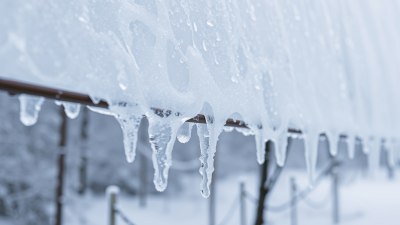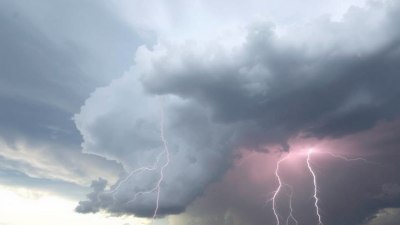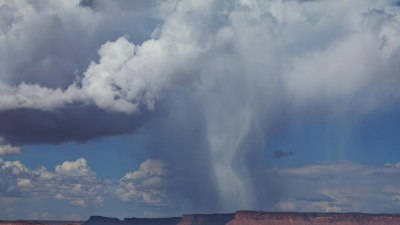What Are Microbursts and How Do They Work
Discover the phenomenon of microbursts, their impact on weather and aviation, and how they form.

Microbursts are intense localized downdrafts that occur within thunderstorms and present a significant hazard to aviation and local weather conditions. These meteorological phenomena can cause rapid and severe changes in wind direction and speed over a very short distance. Understanding microbursts is crucial for meteorologists, pilots, and anyone interested in the atmospheric sciences.
To comprehend microbursts better, let’s break down their formation and characteristics. A microburst occurs when rain-cooled air descends rapidly through a thunderstorm. When this cold air reaches the ground, it spreads out horizontally, creating strong and gusty winds. Microbursts are usually brief, lasting anywhere from a few seconds to several minutes, but they can produce wind gusts exceeding 100 mph, causing damage similar to that of a tornado.
Types of Microbursts
Microbursts can be classified into two main types: wet microbursts and dry microbursts. Wet microbursts are associated with heavy rainfall, while dry microbursts occur in regions where there is minimal precipitation. Wet microbursts typically occur in humid environments where thunderstorms are prevalent, while dry microbursts are often found in arid or semi-arid regions.
Formation of Microbursts
The formation of a microburst begins with a thunderstorm. In a thunderstorm, convection occurs, causing warm moist air to rise. As this warm air ascends, it cools, and when it reaches a certain temperature, condensation occurs, leading to cloud formation. Internal dynamics in the storm can cause the air to cool rapidly, leading to the downdraft that characterizes microbursts.
The cooling effect happens because of evaporative processes. As raindrops begin to fall, they can evaporate into the surrounding air, which cools the air mass. This cooled, denser air then starts to descend rapidly towards the earth. Eventually, as the air reaches the surface, it can spread outwards, resulting in an outflow boundary that can trigger additional storm activity.
Characteristics of Microbursts
Microbursts feature specific characteristics that are crucial for identifying them. The most notable is their horizontal and vertical scales. Microbursts typically have a diameter of less than 4 km (approximately 2.5 miles) and a vertical descent speed that can exceed 16 m/s (about 35 mph). The sudden onset of strong winds from such a localized area can be hazardous, especially to aircraft during takeoff and landing.
Wind direction changes dramatically in microbursts. One might experience a strong headwind followed by an equally strong tailwind as the wind shifts, which can lead to loss of control for aircraft. This phenomenon poses significant risks, especially as pilots may not have enough time to react to sudden changes in wind speed and direction.
Impact on Aviation
The aviation industry takes microbursts very seriously due to their potential to cause accidents during takeoff and landing phases of flight. To enhance safety, airports employ various tools to detect and monitor microbursts. Doppler radar systems can identify the wind patterns associated with microbursts, giving pilots crucial information to avoid these hazardous conditions.
Training programs for pilots often include education on the dangers of microbursts. Staying aware of weather conditions and understanding how to respond when encountering microburst conditions can be the difference between a safe or disaster-prone landing. In addition to training, the development of operational procedures for managing flight operations in potentially hazardous microburst conditions contributes significantly to safety.
Detection and Analysis
Detection of microbursts is primarily done using Doppler radar technology. This sophisticated radar system can determine wind patterns and velocities in real time. Meteorologists analyze radar data to identify rapid downdrafts and developing outflow boundaries that signify a potential microburst. Modern technology also allows the integration of ground-based sensors and satellite data to enhance predictive capabilities.
In addition to radar, other technologies, such as the Terminal Doppler Weather Radar (TDWR), specifically designed for detecting low-level wind shear, are used at busy airports. These systems help issue warnings to pilots and control towers when conditions favorable for microbursts appear.
The Role of Forecasters
Weather forecasters play a crucial role in informing the aviation community about the potential for microbursts. By integrating multiple data sources and modeling software, forecasters analyze previous thunderstorm patterns and current atmospheric conditions to predict when and where microbursts may occur. Dissemination of this information through correct channels ensures that air traffic controllers and airline operators are prepared to take necessary precautions.
Forecasters continue to refine their understanding of microbursts and their behavior. Current research includes using numerical models to simulate microburst occurrences and their impacts, leading to improved predictive capabilities. This research is vital in developing better forecasting methods that can save lives and prevent accidents.
In conclusion, microbursts are fascinating yet dangerous meteorological phenomena. These intense downdrafts can quickly change flight conditions, posing challenges for pilots and requiring diligent monitoring by meteorologists. With advancements in detection technology and ongoing research, the ability to predict and respond to microbursts is vital for enhancing aviation safety and understanding weather patterns. As our knowledge expands, so does our capability to mitigate the risks associated with these sudden and powerful wind events.











